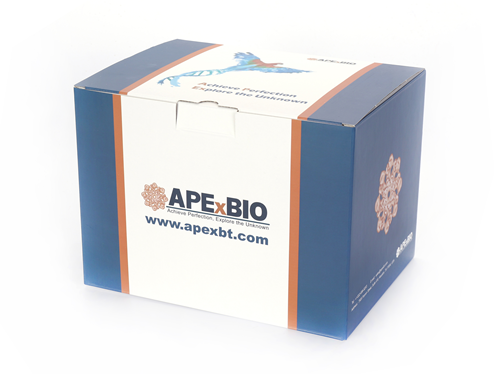Recombinant Mouse FGF-8
Murine FGF-8 is a heparin binding growth factor belonging to the FGF family, which plays a central role during prenatal development, postnatal growth and regeneration of a variety of tissues, by promoting cellular proliferation and differentiation. Murine FGF-8 is first purified from an androgen-dependent mouse mammary carcinoma cell line as an androgen induces secretion. Cloning and analysis of the murine FGF8 gene revealed at least eight potential protein isoforms (FGF-8a-h). Murine FGF-8a and b share 100 % amino acid identity with that in humans, and murine FGF-8e and f share 98 % amino acid identity with humans. None of the FGF-8 isoforms exhibited activity to FGFR1b, 2b, 3b, but FGFR2c, 3c and FGFR4 can be activated by several FGF-8 isoforms. FGF-8 plays an important role in the regulation of embryonic development, cell proliferation, cell differentiation and cell migration, and it is required for normal brain, eye, ear and limb development during embryogenesis.
Reference:
1. Powers CJ, McLeskey SW, Wellstein A. 2000. Endocr Relat Cancer. 7:165-97.
2. Mattila MM, Harkonen PL. 2007. Cytokine Growth Factor Rev. 18:257-66.
3. Tanaka A, Miyamoto K, Minamino N, et al. 1992. Proc Natl Acad Sci U S A. 89:8928-32.
4. Gemel J, Gorry M, Ehrlich GD, et al. 1996. Genomics. 35:253-7.
5. Blunt AG, Lawshe A, Cunningham ML, et al. 1997. J Biol Chem. 272:3733-8.
6. Ornitz DM, Xu J, Colvin JS, et al. 1996. J Biol Chem. 271:15292-7.
7. Zhang X, Ibrahimi OA, Olsen SK, et al. 2006. J Biol Chem. 281:15694-700.
8. Olsen SK, Li JY, Bromleigh C, et al. 2006. Genes Dev. 20:185-98.
|
Gene ID |
14179 |
|
Accession # |
P37237 |
|
Alternate Names |
AIGF, HBGF-8, FGF-8c |
|
Source |
Escherichia coli. |
|
M.Wt |
Approximately 28.1 kDa, a single non-glycosylated polypeptide chain containing 246 amino acids. |
|
AA Sequence |
QVRSAAQKRG PGAGNPADTL GQGHEDRPFG QRSRAGKNFT NPAPNYPEEG SKEQRDSVLP KVTQRHVREQ SLVTDQLSRR LIRTYQLYSR TSGKHVQVLA NKRINAMAED GDPFAKLIVE TDTFGSRVRV RGAETGLYIC MNKKGKLIAK SNGKGKDCVF TEIVLENNYT ALQNAKYEGW YMAFTRKGRP RKGSKTRQHQ REVHFMKRLP RGHHTTEQSL RFEFLNYPPF TRSLRGSQRT WAPEPR |
|
Appearance |
Sterile Filtered White lyophilized (freeze-dried) powder. |
|
Stability & Storage |
Use a manual defrost freezer and avoid repeated freeze-thaw cycles. - 12 months from date of receipt, -20 to -70 °C as supplied. - 1 month, 2 to 8 °C under sterile conditions after reconstitution. - 3 months, -20 to -70 °C under sterile conditions after reconstitution. |
|
Formulation |
Lyophilized from a 0.2 µm filtered concentrated solution in PBS, pH 7.4, 500 mM NaCl. |
|
Reconstitution |
We recommend that this vial be briefly centrifuged prior to opening to bring the contents to the bottom. Reconstitute in sterile distilled water or aqueous buffer containing 0.1% BSA to a concentration of 0.1-1.0 mg/ml. Stock solutions should be apportioned into working aliquots and stored at ≤ -20 °C. Further dilutions should be made in appropriate buffered solutions. |
|
Biological Activity |
Fully biologically active when compared to standard. The ED50 as determined by a cell proliferation assay using murine balb/c 3T3 cells is less than 5.0 ng/ml, corresponding to a specific activity of > 2.0 × 105 IU/mg in the presence of 10 μg/ml of heparin. |
|
Shipping Condition |
Gel pack. |
|
Handling |
Centrifuge the vial prior to opening. |
|
Usage |
For Research Use Only! Not to be used in humans. |
Quality Control & DataSheet
- View current batch:
-
Purity > 97 % by SDS-PAGE and HPLC analyses.
- Datasheet
Endotoxin: Less than 1 EU/µg of rMuFGF-8 as determined by LAL method.








